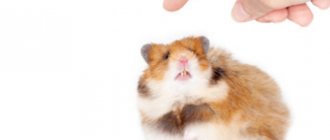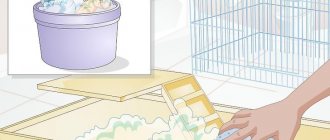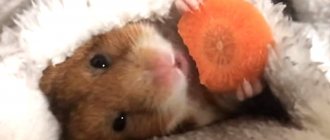Children bite to cope with a problem or to get their needs met. For example, your baby may bite to express a strong feeling (such as frustration), to communicate that he needs space (maybe another baby is standing too close), or because he is teething. Observe your child closely to understand the root cause of his biting. This will help you take the right measures and deal with this problem.
Prevention on the street
While the child is small, it is easy to cover him with a mosquito cover right in the stroller. In some cases, it is convenient to use protective clothing or tents with mosquito nets. In all other situations, repellents become almost the only protective measure. Modern repellents typically use one of these two main active ingredients - DEET or picaridin.
DEET (diethyltoluamide) is the most commonly used broad-spectrum ingredient that is effective against mosquitoes, biting flies, fleas and ticks. In most cases, a repellent containing up to 10% DEET will prevent mosquito bites. In areas at high risk of insect-borne infections (where malaria, Ross River virus, Barmah Forest virus and Dengue fever occur), repellents with a DEET concentration of 15–30% should be used.
DEET can be safely applied to cotton, wool and nylon, but can damage spandex, rayon, acetate and leather clothing. DEET can dissolve plastics and vinyl (such as sunglass frames or watch bands).
Picaridin is a new repellent ingredient that is odorless and less sticky than DEET. May be more pleasant to use, does not dissolve plastic. Studies have shown that picaridin is as effective as DEET; however, its protection is less long-lasting and it will need to be applied more frequently. Products containing 10% picaridin will prevent insect bites in most situations.
Safety of using repellents in children
Before use, read the label, assess the level of DEET or picaridin in the product, and use the repellent only as directed by the manufacturer.
Follow simple rules:
- Choose roll-on medications over aerosols if you have a choice.
- Apply a moderate amount of the drug to exposed skin.
- Do not apply the drug to cuts, wounds or irritated skin.
- Do not apply to areas around the eyes or mouth (in case of accidental contact with eyes, rinse immediately with plenty of water!).
- Do not apply to the palms or fingers of small children.
- When you return home, wash the repellent off your skin with soap and water.
- Keep repellents out of the reach of children.
- If you need to apply both sunscreen and repellent, apply the sunscreen first. Products that combine sunscreen and repellent are not recommended by experts, as sunscreen usually needs to be reapplied, but repellent does not.
Physical methods of protection
Mosquitoes are attracted to dark colors, so you should wear light-colored clothing that covers your wrists and ankles to reduce the likelihood of being bitten. If you are planning to travel to high-risk areas, it is recommended that you obtain medical advice before traveling; you may need additional vaccinations against infections and/or drugs to prevent malaria.
Stagnant water attracts mosquitoes, so stay away from dams, ponds, swamps and other areas with standing water.
To prevent mosquitoes from breeding near your home:
- Cover all water containers (including swimming pools) to prevent mosquitoes from laying eggs there.
- Empty all water containers when not in use.
- Change the water in used containers at least once a week.
- Cover cesspools and septic tanks to prevent mosquitoes from laying eggs in them.
- Remove excess vegetation from garden ponds and stock the ponds with fish.
- Avoid overwatering your garden.
What provokes the brave little guy to bite?
Hamsters often start biting when they are handled. At the very beginning, they do not trust the new owners, and thus defend themselves. After purchasing, you should not pick it up or bring it particularly close to your face. Whatever the rodent is afraid of and does not use its teeth, it must be tamed.
Hamsters show aggression in several cases:
- The female is pregnant or with children. Thus, she wants to protect her family. Sees danger in a person.
- If you harm him. Often the child does not calculate his strength, and this causes harm to the animal. Children must understand that a pet is not a toy.
- A sudden change of scenery. The hamster gets comfortable and does not trust its owners. He needs time to get used to his new home and the people around him.
- There is no chalk or other dental device. You should definitely buy this accessory at a pet store.
- You should not hit a rodent, especially in his house. This is a fortress where he should feel protected.
- The pet may become restless and cause harm to its owners.
A common reason is the wrong location of his house. Do not leave in a draft. It is also worth monitoring the temperature in the apartment. The norm is 20-22 degrees. Hamsters are afraid of cold and heat.
Prevention at home
The basis for protection against midges in the house are mosquito nets and fumigators. Attention! Remember that a mosquito net increases the risk of a child falling from a window, as it creates the illusion of a barrier - use window blockers.
Fumigators can work on plates or liquid, slowly spraying a substance toxic to insects around them. The substance most often used in fumigators is ethok (also known as prallethrin).
A common question for pediatricians is “my child found and chewed a fumigator plate, what does this mean for him?” The fumigator plate contains about 9 mg of prallethrin. The oral toxic dose of prallethrin for humans is 600 mg/kg (LD50). Thus, neither eating these plates nor inhaling fumes from a fumigator can usually cause serious harm to a child, but getting repellents and chemicals for fumigators into the mouth and mucous membranes should still be avoided.
You can read more about the use of repellents and fumigators on the Rospotrebnadzor website.
Treatment of insect bites
Many children (and some adults) have pronounced local reactions to the bites of midges (mosquitoes, midges, horseflies): immediately after the bite, a urticarial element forms around it within a radius of 1–3 cm (as in urticaria, intradermal edema), lasts for several hours and itches intensely. Then it turns into a papule, which is smaller in size but more persistent. On top of this papule there are often scratches and bloody or serous crusts. The papule usually goes away within a few days, but the crusts can remain for a very long time - if a person scratches them with his nails several times a day, rips them off, and they form again. The use of external or systemic medications after insect bites reduces the likelihood of serious scratching, secondary infection, reduces unpleasant symptoms (itching, swelling at the bite site, burning and hyperemia) and speeds up recovery. This is especially important for children, who are prone to more violent local reactions and are much less able to restrain the urge to scratch the bite site until a bloody scab appears.
Immediately after the bite
As soon as you find urticarial marks on your child’s skin from fresh bites (you came home from the street or picked up a woken up baby in your arms), apply a cooling antipruritic mash (Calamin or Tsindol) to the bite sites. Repeat application once an hour on this day, most likely in a day you will hardly be able to find the bite site (all changes on the skin will disappear).
If the urticarial element nevertheless turns into a papule or crust
If you did not apply the mash, or did, but a papule still forms and itches, start applying a low-potency steroid cream (hydrocortisone eye ointment, Sinaflan or Afloderm) to the area. The steroid is applied 1–2 times a day; a volume of ointment of no more than half a grain of rice is required for one element of the rash. The course usually takes 2–4 days, during which time the element will almost completely disappear. For severe itching or local swelling, you can use a second-generation antihistamine, such as Zodak (as directed) for several days in a row.
If a midge has bitten near the eye or on the lip, and swelling of frightening proportions has developed
In this case, the child’s eyes may stop opening, and problems with pronouncing words may appear (a swollen lip makes it difficult to speak clearly). Most often, it is enough to just wait, or apply cold and wait - and after 15-30 minutes such local swelling begins to subside, and after an hour it disappears completely. In severe cases, or if you want to speed up recovery, you can (in addition to cold) use an antihistamine internally and a local steroid externally.
If bitten by a Hymenoptera (wasp, bee, bumblebee, hornet, etc.)
The bite or sting of Hymenoptera is much more unpleasant and dangerous than the bites of ordinary midges. They cause severe pain, a strong local reaction (redness, itching, swelling) and take much longer to resolve. With multiple bites, in addition to local reactions, there may be severe systemic reactions (malaise, fever, weakness, loss of appetite), which disappear within a few days. Additionally, some people are allergic to Hymenoptera venom and may develop anaphylactic reactions and even die from such stings. Help for single bites in the absence of anaphylaxis (fainting or semi-fainting, a pronounced change in general well-being) is generally no different from help for a midge bite, but the effect will have to wait much longer. If severe systemic reactions occur, you must immediately consult a doctor, and if anaphylaxis and/or Quincke's edema occurs in the larynx (hoarseness and severe difficulty breathing), call an ambulance immediately. For a person who has experienced anaphylaxis at least once in their life, the doctor will write a prescription for epinephrine (ideally an epinephrine pen) and teach him and his loved ones how to use this drug while waiting for an ambulance.
Important: when stung by a bee, you need to remove the sting from the wound as quickly as possible; assistance begins with this step.
A common complication of insect bites: papular urticaria
Papular urticaria is a rash that occurs in response to insect bites in places where the insect has not bitten; this is a “slow allergy” to bites. Most often it occurs in response to bites from fleas (including fleas), ticks and scabies, but a simple gnat can also lead to it. Papular urticaria is not dangerous, but can be uncomfortable, itchy, cosmetically unsightly and last for several months. It will go away on its own sooner or later, but a long course of antihistamines and sometimes local treatment can be useful to relieve symptoms and speed up recovery. You can read more here.
General Tips
Try not to let your child scratch the bite area, especially the eyes. This gives immediate relief, but leads to scratching, infection, and significantly lengthens the recovery time.
Author:
Butriy Sergey Alexandrovich pediatrician
Bitten by a hamster, how to understand that he is healthy
Don't panic, you just need to watch him. If this is your rodent, it will be easier. In case of illness, it will affect his behavior. Aggression, anxiety, and loss of sleep may occur. The animal behaves in a way that is not usual for it. If these signs are present, then you should take your pet to a special clinic to have tests done. This way you will know for sure that if a hamster bites a child until he bleeds, it is safe (at least in your case). But if your pet dies in a short time, you urgently need to go to the clinic. Most likely he has rabies (which is very rare). This means that you missed the unnatural behavior of your animal. Remember, hamsters are nocturnal animals and become active in the evening. Therefore, you need to observe in the evening or at night. But if he is still sick, then symptoms may appear during the day.











